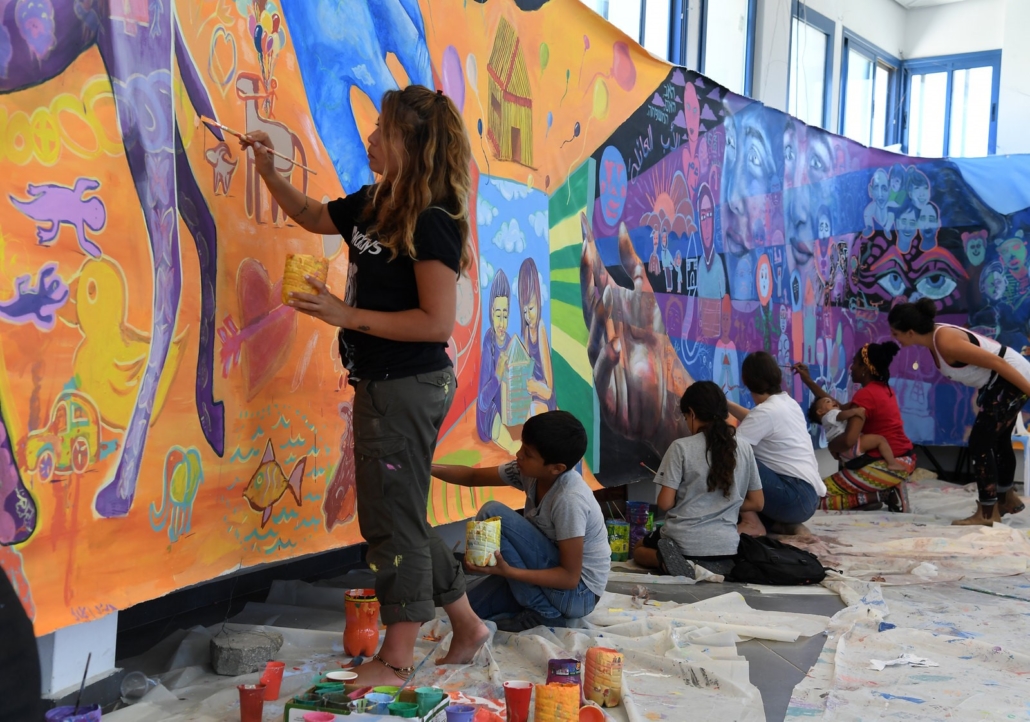The Healing Power of Community Murals
Art has always been a powerful medium for self-expression, storytelling, and cultural preservation. Among its many forms, murals stand out as monumental expressions of collective consciousness. Community murals, in particular, transcend the mere aesthetic and serve as therapeutic tools that heal, unite, and empower communities. 
These large-scale paintings often emerge in urban landscapes, revitalizing neighborhoods, giving voice to marginalized communities, and fostering a sense of belonging.
The healing power of community murals extends beyond their visual appeal. They provide emotional relief, psychological well-being, and social transformation. By engaging local artists and residents, they become symbols of hope and resilience, bridging the past, present, and future of the communities they adorn.
The Psychological and Emotional Impact of Murals
Art as a Medium of Emotional Healing
- Art therapy has long been recognized for its role in healing trauma and mental distress. Community murals act as public art therapy by allowing artists and community members to channel their emotions onto a large, visible canvas.
- The creative process fosters a meditative state, reducing stress and anxiety levels among participants and viewers.
- Public murals provide daily exposure to uplifting imagery, positively influencing the mood and mental health of passersby.
Symbolism and Storytelling for Emotional Connection
- Murals often incorporate cultural and historical elements that help individuals connect with their heritage and personal identities.
- They serve as visual narratives that validate the experiences of a community, offering recognition and support to those who have felt unseen or unheard.
- Murals commemorating significant events or figures provide a sense of closure, remembrance, and inspiration.
Community Murals as Social Unifiers
Fostering Unity and Inclusion
- Murals bring people together, breaking down barriers of race, class, and language. The collaborative nature of mural creation encourages dialogue and cooperation among diverse groups.
- They create a shared identity and pride within a neighborhood, strengthening communal bonds.
- Inclusive art projects make marginalized voices heard, ensuring equal representation in public spaces.
Public Spaces Transformed into Cultural Hubs
- Community murals revitalize neglected areas, turning abandoned walls into vibrant storytelling canvases.
- They contribute to placemaking, making public spaces more welcoming, safe, and aesthetically pleasing.
- As tourist attractions, murals bring economic benefits by drawing visitors who support local businesses and artists.
The Role of Community Murals in Healing Trauma
Art as a Response to Social Issues
- Many community murals emerge in response to social injustices, disasters, and community struggles, serving as both an acknowledgment and a pathway to healing.
- They address issues such as racial injustice, gender equality, and environmental concerns, fostering awareness and activism.
- Murals in post-conflict or disaster-stricken areas help communities process grief and rebuild a hopeful future.
Murals as Catalysts for Change
- Street art activism is a growing movement where murals serve as platforms for change and protest.
- They create conversations around pressing social issues and mobilize communities towards action.
- Interactive murals, where viewers contribute, create a deeper engagement and a sense of collective ownership.
Sustaining the Legacy of Community Murals
Education and Artistic Empowerment
- Mural projects often involve art workshops that teach participants painting skills, teamwork, and cultural appreciation.
- Schools and organizations can integrate mural-making into educational curriculums to promote artistic literacy and creative problem-solving.
- Empowering young artists through mentorship programs ensures the continuity of community-led art initiatives.
Preservation and Long-Term Impact
- Murals require maintenance to withstand environmental factors and vandalism.
- Local governments and organizations should allocate resources for mural preservation to sustain their impact over time.
- Digital archiving of murals through photography and virtual reality ensures their legacy lives on even after physical deterioration.
Conclusion
Community murals are more than just artistic embellishments; they are powerful instruments of healing, transformation, and unity. By addressing psychological, social, and cultural dimensions, they breathe life into communities and leave lasting imprints on the hearts and minds of those who interact with them. As society continues to evolve, the significance of community murals will only grow, serving as beacons of resilience, hope, and artistic expression.
References
- The Role of Art Therapy in Mental Health
- Murals as a Tool for Social Change
- How Street Art is Transforming Cities
- Community Murals and Their Impact
- Placemaking and Public Art
- The History and Evolution of Murals
- Healing Through Public Art
- The Economic Benefits of Murals
- Street Art as a Medium for Protest
- Psychological Effects of Public Art


























![[LIVE] Engage2Earn: Veterans Affairs Labor repairs](https://cdn.bulbapp.io/frontend/images/1cbacfad-83d7-45aa-8b66-bde121dd44af/1)
















